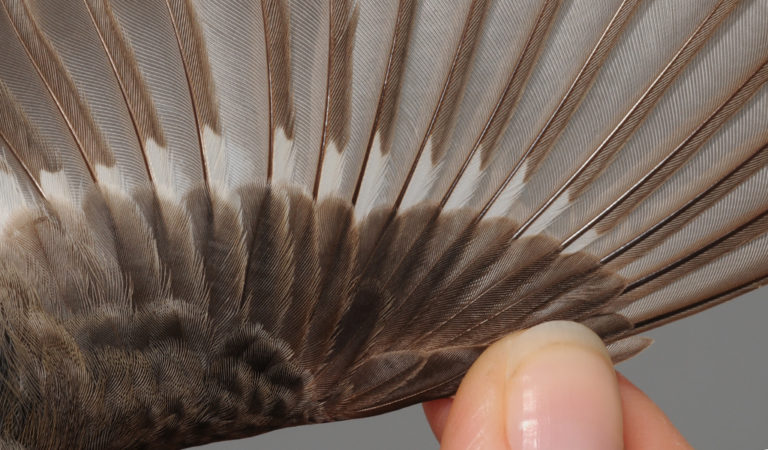

Collared Flycatcher & Pied Flycatcher
ID – BEST CRITERIA:
The identification of the two black-and-white flycatchers have been rather well covered in the litterature, e.g. Svensson (1992) and Mild (1994). Still, difficult individuals are regularly encountered, especially in 1cy birds. Further, in the Baltic area (Öland and Gotland) the two species show a rather high incidence of hybridization, resulting in a portion of more or less intermediate birds. Ottenby is therefore a badly choosen site to explore the limits of the variations in pure bred birds, since we do not know the genetical history of the birds that we handle.
F. albicollis / Collared flycatcher
Plumage autumn:
Plumage spring:
Wing-formula:
F. hypoleuca / Pied Flycatcher
Plumage autumn:
Plumage spring:
Wing-formula:

F. albicollis, 3cy+ female, May. Adult PP show, on average, more white at bases than juvenile ones, but the individual variation is pronounced. In both adult females shown here, white reaches to P5 only. Note however that the spots are long and in the inner part of the hand reaches rather far outside the PC. [CP45016]
More Ficedula albicollis:
Ageing autumn
Sexing autumn
Ageing spring
Sexing spring
Moult
More Ficedula hypoleuca:
Ageing autumn
Sexing autumn
Ageing spring
Sexing spring
Moult
More Acrocephalus scirpaceus:
Ageing autumn
Ageing spring
Moult
Ringers’ DigiGuide is sponsored by: